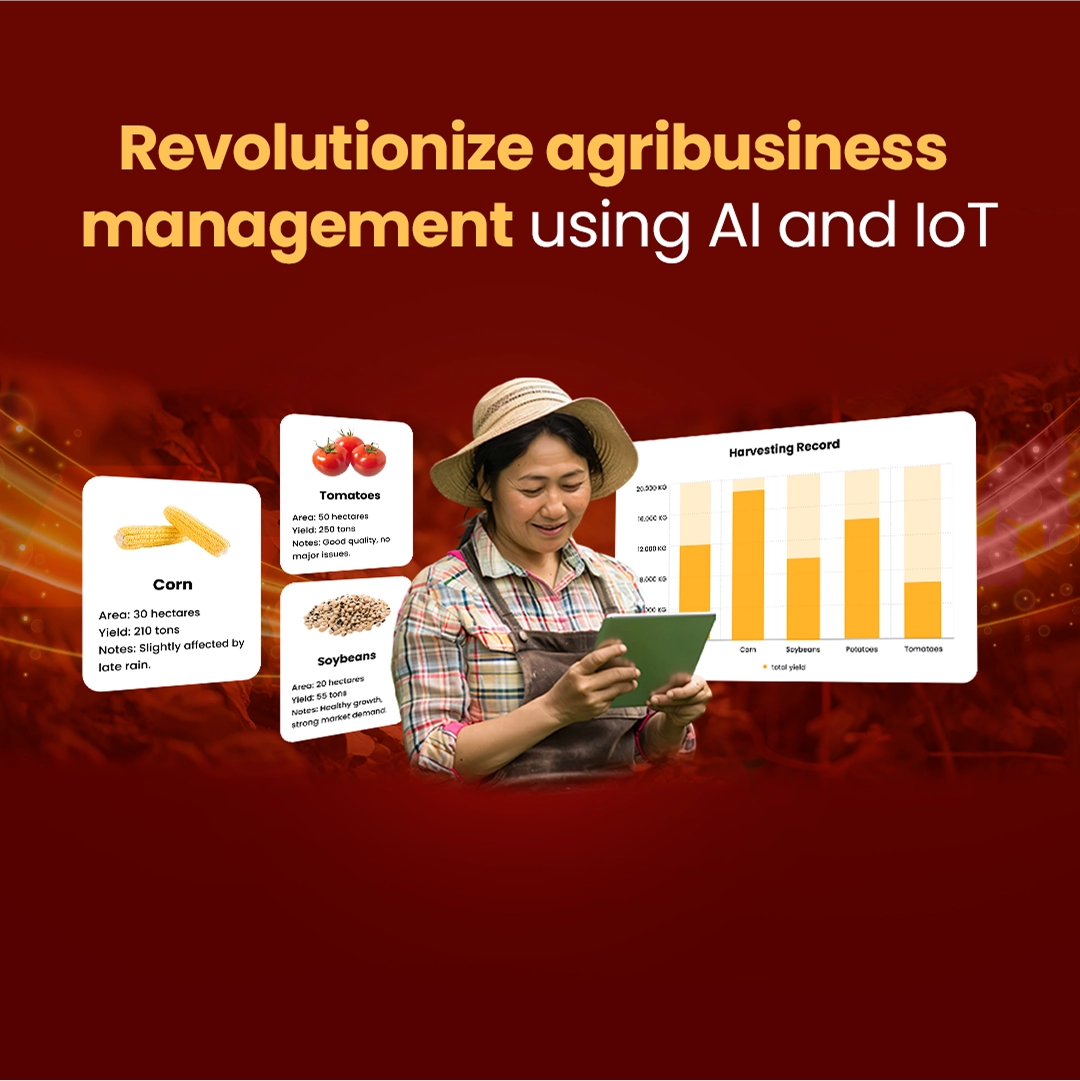I know that managing a farm is tough because climate change makes traditional methods obsolete without smart farming. Disconnected tools slow down our decisions and limit the potential for growth in this competitive market.
These gaps lead to wasted inputs and slow adjustments, but using agriculture software solves this. It unifies monitoring and supports data-driven actions that strengthen productivity across the entire farm.
This guide explains the essential technologies and steps to help you begin a successful transformation. Tuklasin kung paano maitataas ng matalinong pagsasaka ang iyong produktibidad sa agrikultura!
Key Takeaways
|
Table of Contents
What Is Smart Farming and Why Is It Important?
Smart farming uses technology like sensors and automation to boost crop yield and quality efficiently. It combines real-time data with precise actions to make agriculture more predictable and productive.
This approach is crucial because it allows businesses to meet rising food demands sustainably. It helps farmers cut costs while maintaining high output in a rapidly changing industry.
Technological Pillars of Smart Farming
These advanced tools act like the senses and brain of the farm, tracking conditions accurately. They provide the real-time insights needed to make data-driven decisions easier.
- Internet of Things (IoT) and sensor networks
IoT devices create a network of sensors that collect field data on soil moisture and crop health. This technology transmits information instantly to help managers monitor conditions remotely. - Drones and satellite imagery
Drones capture high-resolution images that reveal crop stress and pest issues across wide fields. Satellites provide broader environmental views to spot long-term trends in vegetation health. - Automation, robotics, and autonomous tractors
Autonomous tractors manage planting and spraying tasks with guided precision and minimal human supervision. Robotic systems also handle delicate harvesting work to ensure consistency and reduce labor needs. - Artificial Intelligence (AI) and big data analytics
AI tools analyze large volumes of historical field data to identify hidden patterns. These systems predict future outcomes like yield volume to help managers plan ahead. - Centralized cloud-based management platforms
Cloud-based platforms bring all farm data into one dashboard for centralized monitoring. This system integrates equipment status and field conditions into a single view.
Benefits of Smart Farming
Adopting these technologies creates long-term advantages that go beyond just higher yields. It shifts operations from intuition to data, making the business more resilient and profitable.
- Increased productivity and yield quantity
Smart farming raises output by ensuring every plant gets the exact nutrients it needs. Data insights determine the ideal planting times to maximize production across all zones. - Significant optimization of operational costs
Precision tools reduce expenses by applying water and chemicals only where necessary. Automation further lowers costs by minimizing manual labor and fuel consumption. - Faster and more accurate decision-making
Real-time alerts help managers identify issues like pests before they cause significant damage. Centralized dashboards enable quick responses to weather shifts or operational risks. - Support for sustainable agriculture practices
Precision agriculture reduces environmental impact by limiting chemical runoff and water waste. Efficient machinery use also lowers emissions to meet regulatory and consumer expectations. - Enhanced traceability and product quality
Digital tools track products from planting to delivery to ensure safety and origin transparency. This capability allows businesses to quickly identify quality issues and maintain market trust.
Smart Farming Adoption Challenges and How to Overcome Them
Despite the clear benefits, the journey toward adoption involves significant hurdles for many enterprises. Identifying these obstacles early is the first step toward designing a realistic strategy.
- High initial investment costs
The upfront cost of purchasing sensors and automated machinery can be a major barrier. Businesses can overcome this by adopting a phased implementation or exploring leasing models. - Connectivity limitations in remote areas
Many farms are in remote areas with unreliable internet that limits cloud-based systems. Using Low Power Wide Area Networks (LPWAN) or offline-capable devices solves this connectivity gap. - Lack of digitally skilled talent
The shift to digital tools requires a workforce skilled in data analysis and robotics. Companies should invest in training programs or partner with technical experts to upskill employees. - Cybersecurity and data privacy risks
Connected farms face cybersecurity threats that can compromise sensitive operational data. Partnering with secure technology providers that offer encryption and regular audits mitigates these risks.
A Practical Guide to Starting Your Smart Farming Transformation
Embarking on this transformation requires a structured approach to ensure smooth execution. A phased strategy allows the company to learn and adapt before full-scale expansion.
- Conduct an audit and identify priority areas
Start by auditing current operations to identify inefficiencies and resource wastage. Analyze historical data to pinpoint the areas with the highest potential for improvement. - Start with a pilot project
Select a specific plot or crop to test the technology on a small scale. This low-risk environment allows you to evaluate effectiveness without disrupting the whole farm. - Choose an integrated and scalable technology platform
Choose a platform that unifies data from sensors and machinery into a single dashboard. The system must be scalable to accommodate future growth and new technologies. - Train your team and build a data-driven culture
Invest in comprehensive training to ensure staff are proficient with the new digital tools. Fostering a data-driven culture encourages the team to rely on insights rather than intuition. - Evaluate, measure ROI, and plan for expansion
Monitor the pilot project’s performance metrics to calculate a clear return on investment. Use these results to secure stakeholder buy-in and plan the expansion across operations.
Case Study of Smart Farming
A fictional company, Agro Success Ltd., struggled with water wastage and inaccurate yield predictions. They faced rising costs and data errors because they relied on manual recording processes.
After implementing an integrated system with IoT sensors, they reduced water use by 25 percent. This fictional example proves that centralized data management significantly improves operational efficiency.
Optimize Your Agribusiness with Solutions from HashMicro
Our HashMicro Agriculture Software automates complex business processes to streamline production. It integrates data from various departments to provide a unified view of your operations.
- Land Management
This feature records location details, lease periods, and planting history within a centralized database system. - Budget and Cost Control
The system tracks actual expenses against planned budgets to monitor financial variances in real-time. - Workforce Management
This tool schedules labor shifts and records attendance data to organize daily field tasks. - Crop Forecasting and Analytics
The software processes historical and current inputs to calculate estimated harvest volumes. - Integrated Financial Management
This module connects agricultural operational data directly with the accounting system for automated reporting.
Experience how our integrated solution can streamline your farm management today. Click here to try our free demo and see the system in action.
Conclusion
Smart farming transforms traditional agriculture by integrating technology for better precision and sustainability. It enables data-driven decisions that boost productivity while optimizing essential resources.
HashMicro Agriculture Software supports this transition by centralizing operations into one efficient platform. It provides the digital foundation needed to manage complex modern farming challenges.
Start your transformation today by signing up for our free demo to see the benefits. Pagbutihin ang iyong agribusiness operations sa amin!
FAQ about Smart Farming
-
What is the main goal of smart farming?
The main goal of smart farming is to use technology and data to increase the quantity and quality of agricultural products while optimizing the use of resources like water, fertilizer, and labor. This leads to higher efficiency, lower costs, and more sustainable farming practices.
-
Is smart farming expensive to implement?
While the initial investment in technology like sensors and drones can be high, it can be managed through a phased approach or service-based models. Over time, the cost savings from resource optimization and increased productivity often provide a significant return on investment.
-
How does ERP software help in smart farming?
ERP software acts as a central hub for smart farming, integrating data from all sources like IoT sensors and drones. It helps manage land, track costs, forecast harvests, and automate financial reporting, providing a complete overview for better decision-making.


































